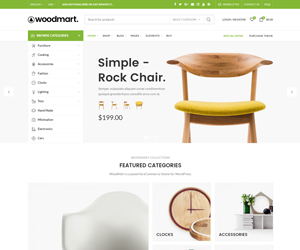Beyond the Grocery Aisle: Why Getting the Right Food from the Right Source is a Game-Changer
We live in an age of incredible convenience. Our supermarkets are gleaming temples of abundance, offering everything from tropical fruits in a snowstorm to pre-made meals in minutes. But have you ever stopped to wonder about the journey that apple took to get to your hand? Or what the chicken in your plastic wrap actually ate during its life?
More and more, people are realizing that what we eat is only half the story. The other, equally critical half is where it comes from. “Getting the right food from the right source” isn’t just a trendy slogan for foodies; it’s a powerful philosophy that can transform your health, your community, and the planet.
Let’s break down why this simple idea is so profoundly important.
1. For Your Health: You Are What What You Eat, Ate
This old adage holds a deeper truth. The nutritional value of your food is directly linked to how it was produced.
-
Soil Health = Nutrient Density: Plants grown in rich, vibrant soil, teeming with microbes, absorb a wider range of vitamins and minerals. Industrial farming often depletes soil, leading to produce that may look perfect but is less nutritious than it was decades ago. Food from responsible sources (like organic farms or your local grower) often prioritizes soil health, meaning you get more nutritional bang for your buck.
-
The Animal Feed Factor: A cow is meant to eat grass, not corn and soy. When animals are raised on their natural diets (grass-fed beef, pasture-raised eggs), their meat, milk, and eggs are richer in beneficial nutrients like Omega-3 fatty acids and Conjugated Linoleic Acid (CLA). The right source ensures animals are raised humanely and healthily, which in turn benefits you.
-
Fewer Unwanted Additives: Sourcing directly from farmers or choosing certified organic products significantly reduces your exposure to synthetic pesticides, herbicides, antibiotics, and hormones. You’re eating food in its purest, most natural state.
2. For the Environment: Voting with Your Dollar
Every food purchase is a vote for the kind of world you want to live in. The right source often means a lighter environmental footprint.
-
Supporting Biodiversity: Large-scale monoculture farming (growing a single crop over a vast area) is devastating to ecosystems. In contrast, small, diversified farms often cultivate a variety of crops and raise different animals, which supports soil health, encourages pollinators, and maintains genetic diversity in our food supply.
-
Reducing Food Miles: That avocado from Mexico or salmon from Norway traveled thousands of miles, burning fossil fuels and emitting greenhouse gases. Locally sourced food dramatically cuts down on “food miles,” reducing its carbon footprint. Eating seasonally is a natural partner to this—enjoying strawberries in summer and squash in fall.
-
Sustainable Practices: The right sources are often stewards of the land. They use methods like crop rotation, water conservation, and regenerative agriculture that work with nature, not against it, helping to rebuild our ecosystems rather than deplete them.
3. For Your Community: Building a Resilient Food System
When you buy from a anonymous global supply chain, your money leaves your community instantly. When you buy from a local source, it circulates locally, creating a powerful ripple effect.
-
Economic Empowerment: Buying from local farmers, bakers, and cheesemakers keeps your money within your local economy. It helps create jobs and supports families, not massive corporations.
-
Food Security: A community rich with local farms, farmers’ markets, and food producers is a resilient one. It’s less vulnerable to global supply chain disruptions, as we’ve seen in recent years. Knowing your farmer creates a direct, transparent, and reliable food network.
-
Connection and Story: There’s a unique joy in shaking the hand of the person who grew your food. It creates a connection and a story behind your meal. You learn about the challenges and triumphs of producing food, fostering a greater appreciation for what’s on your plate.
4. For the Truth: Transparency and Trust
In a complex global food system, labels can be misleading and origins can be obscured. Seeking the right source is about demanding transparency.
-
Knowing the Journey: When you buy from a source you trust, you can ask questions. How were the animals treated? What pesticides were used, if any? Was this caught wild or farmed? This level of knowledge is empowering and ensures your values align with your purchases.
-
Authentic Flavor: Taste is the most immediate reward. A sun-ripened tomato from a local farm in August bursts with a flavor that a greenhouse-grown, shipped-from-abroad tomato in January can’t replicate. The right source prioritizes quality and flavor over shelf life and transportability.
How to Start Finding the “Right Source”
This doesn’t mean you have to overhaul your life overnight. Start small!
-
Visit a Farmers’ Market: This is the easiest and most enjoyable way to connect with local producers. Talk to them, ask about their practices, and taste the difference.
-
Join a CSA (Community Supported Agriculture): Subscribe to a “share” of a local farm’s harvest. You’ll get a regular box of seasonal produce and directly support a farm’s operation.
-
Read Labels Carefully: Look beyond marketing claims. “Natural” means very little. Prioritize labels like “Animal Welfare Approved,” “Certified Organic,” or “Wild-Caught.”
-
Get to Know Your Butcher and Fishmonger: These specialists can tell you exactly where their products came from and how they were raised or caught.
-
Grow Something Yourself: Even a pot of herbs on a windowsill reconnects you to the miracle of growing food and deepens your appreciation for the process.
The Final Bite
Choosing the right food from the right source is a conscious decision to be more connected, healthier, and responsible. It’s about understanding that our food choices are woven into a larger tapestry of environmental health, economic justice, and personal well-being.
So next time you’re about to make a purchase, take a second to consider the story behind it. Your body, your community, and the planet will thank you for it.






